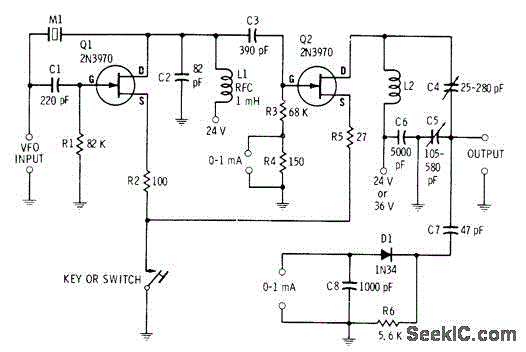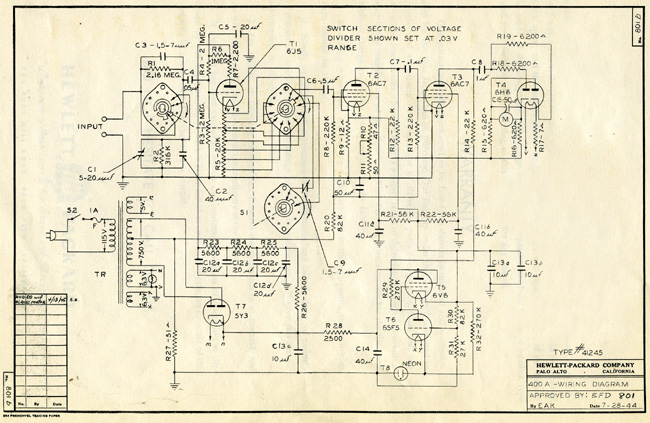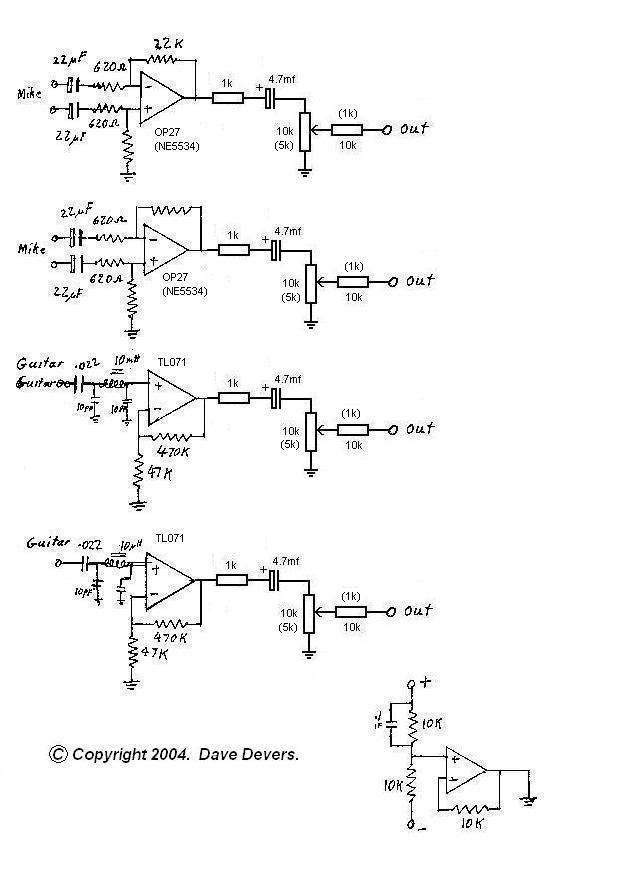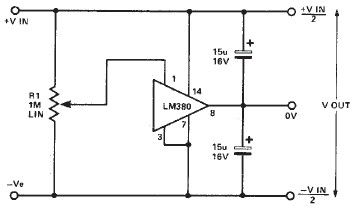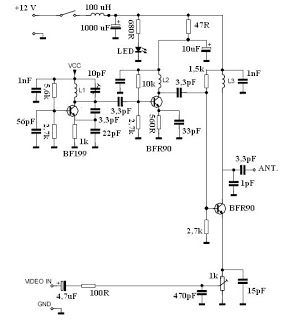
Long range FM transmitter electronic project
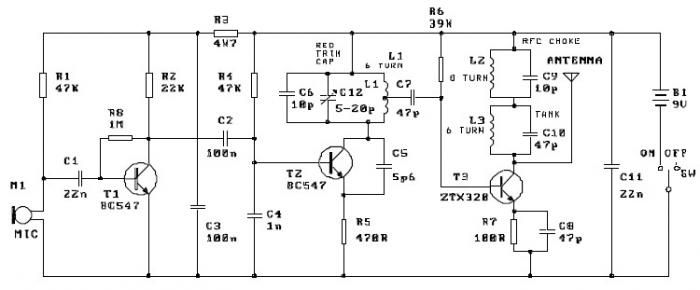
This FM transmitter project is a simple yet effective circuit capable of transmitting signals over a distance of up to 1 kilometer in open air conditions. The circuit employs an RF transistor in the output stage, along with two BC547 transistors in the initial stages. The output from the collector of the first transistor is directed to the base of the second transistor, which modulates the resonant frequency of the tank circuit consisting of an L1 coil and a red trimmer capacitor. The modulation occurs by varying the junction capacitance of the second transistor, which is influenced by the voltage applied to its base. The tank circuit is configured as a Hartley oscillator. The final stage, utilizing a third transistor (T3), amplifies the RF output signal. A 10pF ceramic capacitor placed in parallel with the red trimmer capacitor facilitates tuning within the 98 MHz to 105 MHz range of the commercial FM band.
This FM transmitter circuit is designed to operate efficiently within the specified frequency range, making it suitable for various applications such as hobbyist projects and educational demonstrations. The use of BC547 transistors in the initial stages allows for effective signal amplification and modulation due to their favorable characteristics in low-frequency applications. The Hartley oscillator configuration is particularly advantageous for generating stable RF signals, as it utilizes the inductance of the coil (L1) and the variable capacitance of the trimmer capacitor to establish the desired frequency.
In this circuit, the modulation process is critical, as it determines the quality and clarity of the transmitted audio signal. By adjusting the voltage at the base of the second transistor (T2), the junction capacitance changes, which in turn affects the resonant frequency of the tank circuit. This allows for dynamic tuning of the transmitter output, enabling it to adapt to different audio sources or transmission conditions.
The final amplification stage, built around the RF transistor T3, is responsible for increasing the power of the RF signal to a level suitable for transmission over longer distances. The careful selection of the 10pF ceramic capacitor alongside the red trimmer capacitor ensures that the circuit can be finely tuned, providing flexibility in operating frequency and improving overall transmission quality.
Overall, this FM transmitter circuit exemplifies a well-structured approach to RF signal generation and modulation, emphasizing simplicity and effectiveness in design while adhering to the operational constraints of the commercial FM band.This FM transmitter electronic project is a very simple and powerful transmitter circuit with a range up to 1 kilometer in the open air. This FM transmitter electronic project uses an RF transistor in its output stage and two BC547`s for the first two stages.
Output from the collector is fed into the base of the second transistor where it modulate s the resonant frequency of the tank circuit (L1 coil and the red trimcap) by varying the junction capacitance of the transistor. Junction capacitance is a function of the potential difference applied to the base of the transistor T2.
The tank circuit is connected in a Hartley oscillator circuit. The final stage built around T3 amplifies the output RF signal. The 10pF ceramic capacitor in parallel with the red trim cap will enable you to tune the transmission in the 98 MHz to 105 MHz range of the commercial FM band. 🔗 External reference
This FM transmitter circuit is designed to operate efficiently within the specified frequency range, making it suitable for various applications such as hobbyist projects and educational demonstrations. The use of BC547 transistors in the initial stages allows for effective signal amplification and modulation due to their favorable characteristics in low-frequency applications. The Hartley oscillator configuration is particularly advantageous for generating stable RF signals, as it utilizes the inductance of the coil (L1) and the variable capacitance of the trimmer capacitor to establish the desired frequency.
In this circuit, the modulation process is critical, as it determines the quality and clarity of the transmitted audio signal. By adjusting the voltage at the base of the second transistor (T2), the junction capacitance changes, which in turn affects the resonant frequency of the tank circuit. This allows for dynamic tuning of the transmitter output, enabling it to adapt to different audio sources or transmission conditions.
The final amplification stage, built around the RF transistor T3, is responsible for increasing the power of the RF signal to a level suitable for transmission over longer distances. The careful selection of the 10pF ceramic capacitor alongside the red trimmer capacitor ensures that the circuit can be finely tuned, providing flexibility in operating frequency and improving overall transmission quality.
Overall, this FM transmitter circuit exemplifies a well-structured approach to RF signal generation and modulation, emphasizing simplicity and effectiveness in design while adhering to the operational constraints of the commercial FM band.This FM transmitter electronic project is a very simple and powerful transmitter circuit with a range up to 1 kilometer in the open air. This FM transmitter electronic project uses an RF transistor in its output stage and two BC547`s for the first two stages.
Output from the collector is fed into the base of the second transistor where it modulate s the resonant frequency of the tank circuit (L1 coil and the red trimcap) by varying the junction capacitance of the transistor. Junction capacitance is a function of the potential difference applied to the base of the transistor T2.
The tank circuit is connected in a Hartley oscillator circuit. The final stage built around T3 amplifies the output RF signal. The 10pF ceramic capacitor in parallel with the red trim cap will enable you to tune the transmission in the 98 MHz to 105 MHz range of the commercial FM band. 🔗 External reference
